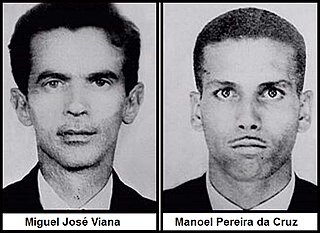 W
WChewbacca Mask Lady is a viral video featuring 37-year-old Texan mother Candace Payne filming herself heartily laughing while wearing a Star Wars Chewbacca mask. The video was posted to Facebook with the description "It's the simple joys in life...." on May 19, 2016.
 W
WThe wearing of non-medical face masks in public to lessen transmission of COVID-19 in the United States was first recommended by the CDC on April 3, 2020 as supplemental to hygiene and appropriate social distancing. Over the course of the pandemic, various states, counties, and municipalities have issued health orders requiring the wearing of non-medical face coverings — such as cloth masks — in spaces and/or businesses accessible to the public, especially when physical distancing is not possible. Some areas only mandated their use by public-facing employees of businesses at first, before extending them to the general public.
 W
WThe False Face Society is probably the best known of the medicinal societies among the Iroquois, especially for its dramatic wooden masks. The masks are used in healing rituals which invoke the spirit of an old hunch-backed man. Those cured by the society become members. Also, echoing the significance of dreams to the Iroquois, anyone who dreams that they should be a member of the society may join.
 W
WGhostface is a fictional identity adopted by several characters in the Scream series. The figure was originally created by Kevin Williamson, and is primarily mute in person but voiced over the phone by Roger L. Jackson, regardless of who is behind the mask. Ghostface first appeared in Scream (1996) as a disguise used by teenagers Billy Loomis and Stu Macher, during their killing spree in the fictional town of Woodsboro. The mask was created and designed by Fun World costume company employee Brigitte Sleiertin as a Halloween costume, prior to being discovered by Marianne Maddalena and Craven for the film. The identity is used primarily as a disguise for the antagonists of each film to conceal their identities while conducting serial murders, and as such has been portrayed by several actors.
 W
WGroucho glasses, also known as nose glasses, the beaglepuss, or the GM 20/20s are a humorous novelty disguise which function as a caricature of the stage makeup used by the comedian Groucho Marx in his movies and vaudeville performances. They typically consist of black frames with attached features including bushy eyebrows, a large plastic nose, bushy moustache, and sometimes a plastic cigar. Considered one of the most iconic and widely used of all novelty items in the world, Groucho glasses were first marketed in the early 1940s and are instantly recognizable to people throughout the world. The glasses often inspire laughter and are today often used as a shorthand for slapstick.
 W
WKwakwaka'wakw art describes the art of the Kwakwaka'wakw peoples of British Columbia. It encompasses a wide variety of woodcarving, sculpture, painting, weaving and dance. Kwakwaka'wakw arts are exemplified in totem poles, masks, wooden carvings, jewelry and woven blankets. Visual arts are defined by simplicity, realism, and artistic emphasis. Dances are observed in the many rituals and ceremonies in Kwakwaka'wakw culture. Much of what is known about Kwakwaka'wakw art comes from oral history, archeological finds in the 19th century, inherited objects, and devoted artists educated in Kwakwaka'wakw traditions.
 W
WThe Lead Masks Case involves a series of events which led to the death of two Brazilian electronic technicians, Manoel Pereira da Cruz and Miguel José Viana, who had last been seen by their families on August 17, 1966. Their bodies were discovered on August 20, 1966, and the cause of their deaths has never been determined.
 W
WMasks among Eskimo peoples served a variety of functions. Masks were made out of driftwood, animal skins, bones and feathers. They were often painted using bright colors. There are archeological miniature maskettes made of walrus ivory, dating from early Paleo-Eskimo and from early Dorset culture period.
 W
WMexican mask-folk art refers to the making and use of masks for various traditional dances and ceremony in Mexico. Evidence of mask making in the country extends for thousands of years and was a well-established part of ritual life in Mexico when the Spanish arrived. In the early colonial period, evangelists took advantage of native customs of dance and mask to teach the Catholic faith although later, colonial authorities tried to ban both unsuccessfully. After Independence, mask and dance traditions showed a syncretism and mask traditions have continued to evolve into new forms, depicting Mexico's history and newer forms of popular culture such as lucha libre. Most traditional masks are made of wood, with others made from leather, wax, cardboard, papier-mâché and other materials. Common depictions in masks include Europeans, Afro-Mexicans, old men and women, animals, and the fantastic/supernatural, especially demons/the Devil.
 W
WA Richard Nixon mask is a mask with the likeness of Richard Nixon. These were commercially available and quite popular in the waning days of the Nixon Administration. They are generally made out of vinyl by the Cesar mask company from France and are sold worldwide. The most famous Nixon mask was the big nose Cesar Nixon comical mask made by Cesar in the 1970s. Later other companies made similar versions made from latex rubber or similar flexible castable compounds.
 W
WThe sisiutl is a legendary creature found in many of the cultures of the Indigenous peoples of the Pacific Northwest Coast. It is typically depicted as a double-headed serpent with fish qualities, sometimes with an additional central face of a supernatural being. The sisuitl features prominently in Pacific Northwest art, dances and songs. The sisuitl is closely associated with shamans because both are seen as mediators between the natural and supernatural worlds.
 W
WA transformation mask, also known as an opening mask, is a type of mask used by indigenous people of the Northwest Coast and Alaska in ritual dances. These masks usually depict an outer, animal visage, which the performer can open by pulling a string to reveal an inner human face carved in wood to symbolize the wearer moving from the natural world to a supernatural realm. Northwest coast peoples generally use them in potlatches to illustrate myths, while they are used by Alaska natives for shamanic rituals.
 W
WYup'ik masks are expressive shamanic ritual masks made by the Yup'ik people of southwestern Alaska. Also known as Cup'ik masks for the Chevak Cup'ik dialect speaking people of Chevak and Cup'ig masks for the Nunivak Cup'ig dialect speaking people of Nunivak Island. They are typically made of wood, and painted with few colors. The Yup'ik masks were carved by men or women, but mainly were carved by the men. The shamans (angalkuq) were the ones that told the carvers how to make the masks. Yup'ik masks could be small three-inch finger masks or maskettes, but also ten-kilo masks hung from the ceiling or carried by several people. These masks are used to bring the person wearing it luck and good fortune in hunts. Over the long winter darkness dances and storytelling took place in the qasgiq using these masks. They most often create masks for ceremonies but the masks are traditionally destroyed after being used. After Christian contact in the late nineteenth century, masked dancing was suppressed, and today it is not practiced as it was before in the Yup'ik villages.